#George Brumder
Text

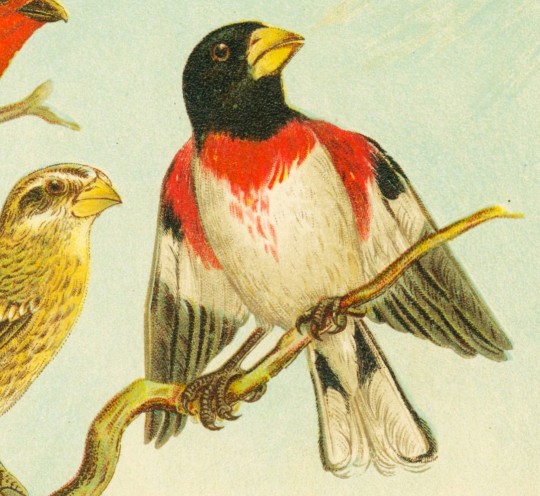

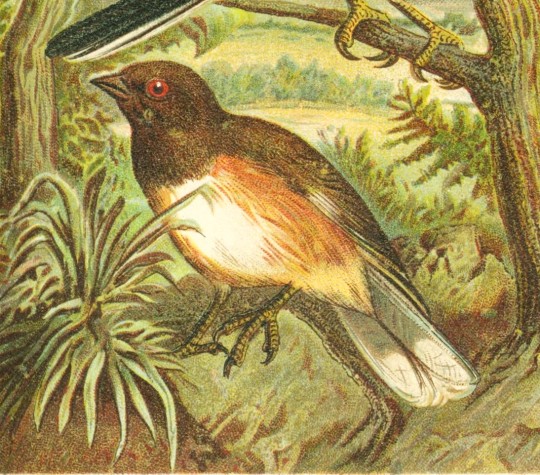


A Red-Flourish Feathursday
Today we present a chromolithograph of a male Scarlet Tanager (Piranga olivacea), a male and female Rose-breasted Grosbeak (Pheucticus ludovicianus), and a male and female Eastern Towhee (Pipilo erythrophthalmus) from a painting by German naturalist and artist Anton Goering (1836-1905), reproduced in our 2-volume set of Our Native Birds of Song and Beauty by the late-19th-century director of the Milwaukee Public Museum Henry Nehrling, and published in Milwaukee by George Brumder from 1893-1896.
The Tanager and Grosbeak are currently in the Cardinal family, while the Towhee is a sparrow. All three are fairly common in our neighborhood, but unfortunately, we rarely see them. However, we do hear them, or at least we think we hear them, since the song of the Tanager and Grosbeak are similar, and even worse, they both sound, to our ears, somewhat similar to the very common American Robin, which is an unrelated thrush:
Scarlet Tanager song
Rese-breasted Grosbeak song
American Robin song
Fortunately, the Towhee has a very distinctive call that we find easily recognizable:
Eastern Towhee song
Because German was prominently spoken in Milwaukee through the middle of the 20th century, these birds are also identified in Nehrling's book by their common German names:
Scarlet Tanager = Scharlachtangara
Rose-breasted Grosbeak = Rosenbrüstiger Kernbeisser
Eastern Towhee = Erdfink
View more posts from Nehrling’s Our Native Birds.
View more Feathursday posts.
#Feathursday#Scarlet Tanager#Rose-breasted Grosbeak#Eastern Towhee#Anton Goering#bird art#animal art#Henry Nehrling#George Brumder#Our Native Birds of Song and Beauty#chromolithographs#Yay chromoliths!#birds#birbs!
28 notes
·
View notes
Text
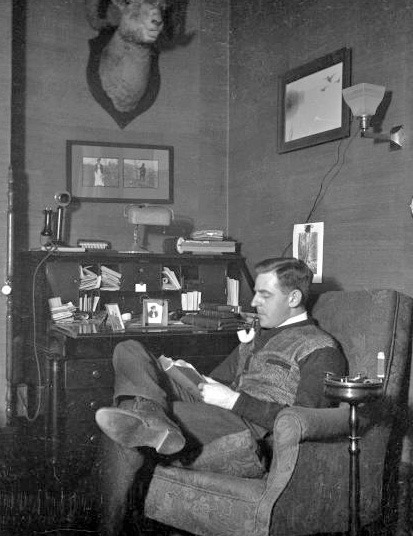
Herbert Paul Brumder sitting and reading in an upholstered chair in front of a desk. He is smoking a pipe and there is a small smoking stand to the right of the chair. A neck mount of a bighorn sheep is hanging high on the wall above the desk. Below the mount is a double frame containing photographs of his mother, Henriette, and father, George. A telephone and desk lamp are sitting atop the desk. taken in Milwaukee, Wisconsin 1915. Source: Wisconsin Historical Society Archives.
#wisconsin history#wisconsin#brumder#pipemen#pipesmoking#smoking pipe#pipes#circa 1915#early 1900s#1900s photography#1910s aesthetic#1910s fashion#1910s#1910s style#milwaukee#milwaukeehistory
8 notes
·
View notes
Text
Milwauker
Of course I've been studying all the 'hoods and history of Milwauker, but I'm still not sure whether 'good land' or 'gathering place by the lake' is the correct etymology. From Father Jaques Marquette to Solomon Juneau, Byron Kilbourn, and George Walker to Gertie, to the Milwaukee Type Bascule Bridge, the French Second Empire architecture of the Mitchell Building, the Italian Renaissance Mackie Building, the Venetian Renaissance of the Iron Block Building, the International Style of the Chase Tower, the neoclassical ASQ Center, the English Arts & Crafts style of the Brumder Mansion, to the Sac, Fox, Ottawa, Ojibwa, Ho Chunk, Potawatomi, and Menomonee tribes, to city hall, which is Flemish Renaissance Revival in style, und so weiter in the German Athens of America.
The QWERTY typewriter was invented here. The city had socialist mayors from 1910 to 1960. The nation’s oldest bowling alley remains here inside the Holler House.
Jones Island Water Reclamation Facility, Growing Power, American Science & Surplus, FLW's Burnham Block, Swing Park, Mary Nohl House, Pabst Mansion, Holler House, Shaker's Cigar Bar, Safe House, The American Geographical Society Library, T.H. Stemper Co., National Bobblehead Hall of Fame and Museum, and Kingdom of Talossa are just some of things to see in Milwaukee that I haven't been to yet.

4 notes
·
View notes
Photo
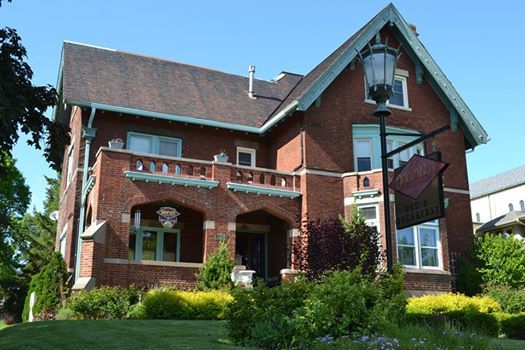
Brumder Mansion
George Brumder Sr. made his fortune publishing German language newspapers, reading material and sheet music. He decided to use some of his hard earned money to build a stately mansion in Milwaukee, Wisconsin for his eldest son in 1910. George Jr. and his wife Henrietta moved in and had eleven children. Only nine survived.
George Sr. died in May of that same year. The Brumder family enjoyed living in this 8,000 sq ft mansion for ten years. When, Henrietta died in the early 1920s, the mansion was put on the market. It was sold to a man named Sam Pick, his brother Ed and their associates. Sam and Ed were affiliated with one of the Chicago gangster organizations supposedly Al Capone’s. Their main objective for moving to Milwaukee was to establish a nightclub as a legal front for their illegal side businesses which included black market liquor, gambling and possibly prostitution. They decided to use the ballroom located in the basement for such endeavors.
Sam expanded his speakeasy by moving it to an upscale building on Bluemound Road. He also opened The Club Madrid. It quickly became a popular hotspot known to be a high end nightclub which served fine food and offered a variety of musical talent, dancers and other unusual acts, and black market booze. The gambling tables were kept somewhere in the building excluding ones used for high rollers. High stakes gambling continued to be conducted in the ballroom. Liquor and in-house prostitutes were offered to these types of clientele as amenities. It is believed Ed was in charge of the high rollers area but there is no evidence to prove this.
Thanks to the repeal of prohibition and paying royalties to those who performed at the Club Madrid, Sam had financial difficulties nearly loosing the club after getting behind on the mortgage payments. However, he managed to rise above it possibly by selling Brumder Mansion to raise some funds. The high rollers gambling operation in the mansion ceased and the secret tunnel leading to the basement sealed up with cement all played in the Pick brothers favor when they were arrested in the 1930s. Their illegal gambling operation was discovered at the Club Madrid, but they were only fined $1,000 and received no jail time. Although the Milwaukee mobsters weren’t as kind. Sam was shot and wounded in the late 1930s but managed to survive. When a stick of dynamite was thrown in to his club in the 1950s, he took the hint and retired to Michigan. What happened to Ed pick is unknown.
An English couple bought Brumder Mansion sometime in the mid-thirties and turned it in to a boarding house for employees of a nearby company. In the 1960s, it was bought by the neighboring Lutheran Church to be used as a parsonage and for church activities. A psychedelic youth chapel was created on the 2nd floor, in what is now George’s Suite. Other rooms were turned into offices, and the ballroom was transformed into a Christian coffee house, complete with live music for entertainment, called The Catacombs. There was a radio station in the Gold Suite.
By 1990s, the upkeep needed for the mansion became more of a challenge for the Lutheran Church. It had a bad roof, white walls, and a buckling ballroom floor. When the central heating system broke down causing the pipes to burst, the church decided to put it back on the market. In 1997, Brumder Mansion was bought by Carol Hirschi, who put a considerable amount of time and money to rehabilitate the Victorian mansion, turning it in to a bed and breakfast. It’s doors opened once again in 1998. It is now owned by Tom and Julie Carr who purchased the mansion in January 2008 and still functions as a bed and breakfast.
Brumder Mansion’s haunted status went rather unnoticed until Carol Hirschi purchased it and began the restoration. It is believed the construction and various antiques placed throughout the 4-story establishment has led to the numerous spirits who now haunt it. Witnesses have heard voices and footsteps. An elderly female spirit known as “Aunt Pussy” or “Susan” occupies the Gold Room. A younger female spirit enjoys the 3rd floor. A male spirit roams throughout the parlor as well as George Brumder’s suit where things would be moved around on their own. A door leading to the mud room would lock on its own. There’s supposedly a playful spirit in Marian’s Room. Witnesses were awoken by an unseen entity bouncing on the bed. A towel lifted off the hook on to the floor. A light on the fireplace mantel turns itself on during the early morning hours.
19 notes
·
View notes
Text
Germania Constructing ~ Milwaukee WS ~ Historic Constructing ~ Register
The Germania Constructing is an eight-story historic Beaux-Arts/Classical Revival constructing . It was inbuilt 1896 for George Brumder to deal with the headquarters of his burgeoning publishing empire. The Eight-story, constructing was designed by German-trained architects Schnetzky & Liebert and was, on the time of its development, the most important workplace constructing within the metropolis of Milwaukee. Along with its attribute…
Posted by Onasill ~ Invoice Badzo on 2013-10-16 22:31:18
Satellite view of my house
#constructing#George Brumder#metropolis#Onasill Invoice Badzo#Schnetzky Liebert#time#within#autumn#nature#lake#river#ocean#mountain#beach#parks#skyscraper#canyon
0 notes
Photo
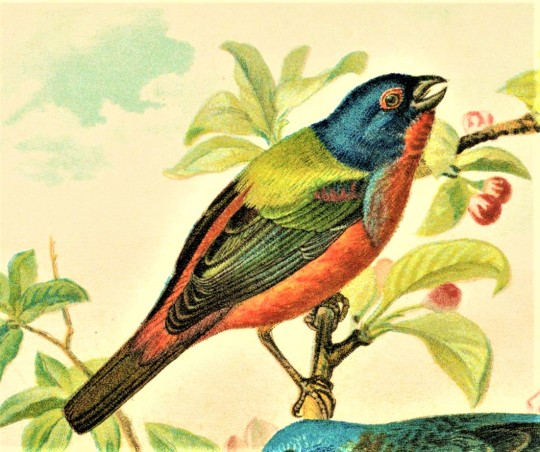
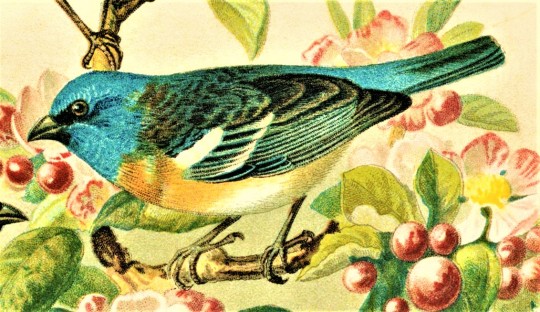

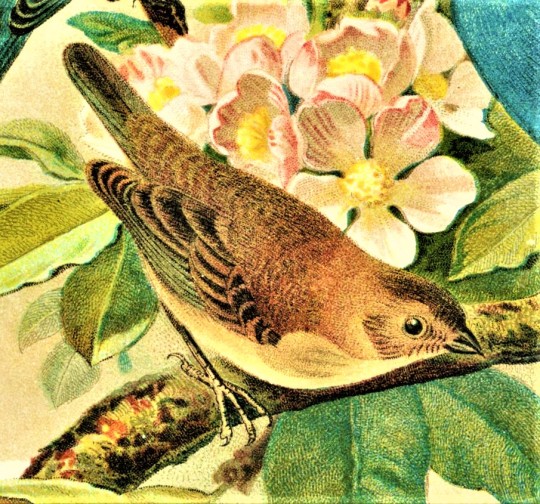
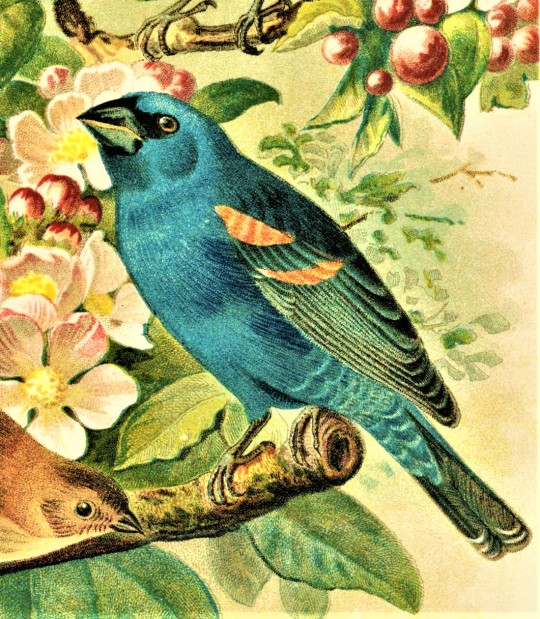

The Feathursday Blues
Summer is coming to a close and our academic year is about to begin, so we’re feeling a bit blue about leaving summer behind, but we’re also excited about the new school year. So, this week we bring you some cheery chromolithographic birds of blue to begin our September. Unfortunately, those lovely little thrushes, the Bluebirds (Genus: Sialia), are not included here, but we think these blue fellows will do. They are, from top to bottom:
Painted Bunting (Passerina ciris).
Lazuli Bunting (Passerina amoena).
Indigo Bunting (Passerina cyanea), male and female.
Blue Grosbeak (Passerina caerulea).
This chromolithograph is from a painting by the noted German wildlife artist Gustav Mützel, found in our 2-volume set of Our Native Birds of Song and Beauty, by the late-19th-century director of the Milwaukee Public Museum Henry Nehrling, and published in Milwaukee by George Brumder from 1893-1896.
View more posts from Nehrling’s Our Native Birds.
View more Feathursday posts.
#Feathursday#buntings#Painted Bunting#Lazuli Bunting#Indigo Bunting#Blue Grosbeak#Henry Nehrling#Gustav Mützel#George Brumder#Our Native Birds of Song and Beauty#wildlife art#chromolithographs#Yay chromoliths!#birds#birbs!
293 notes
·
View notes
Photo

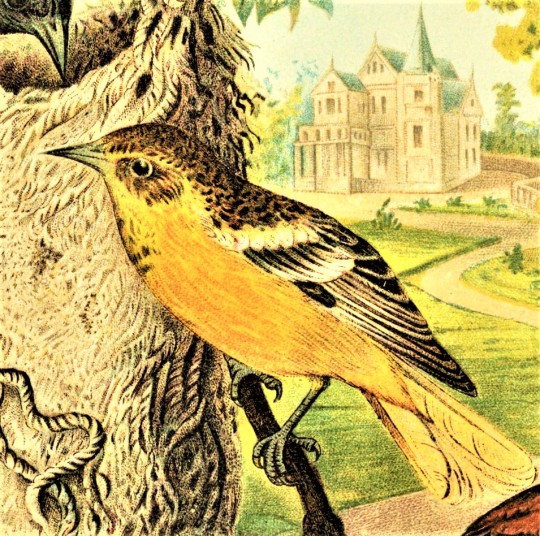

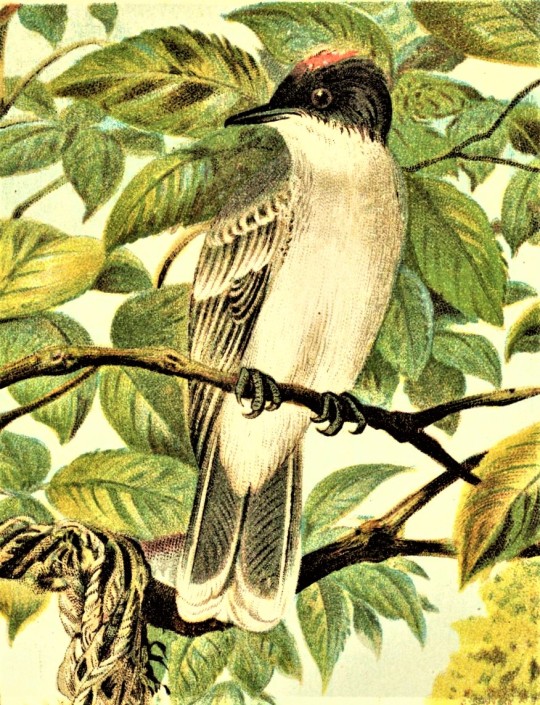
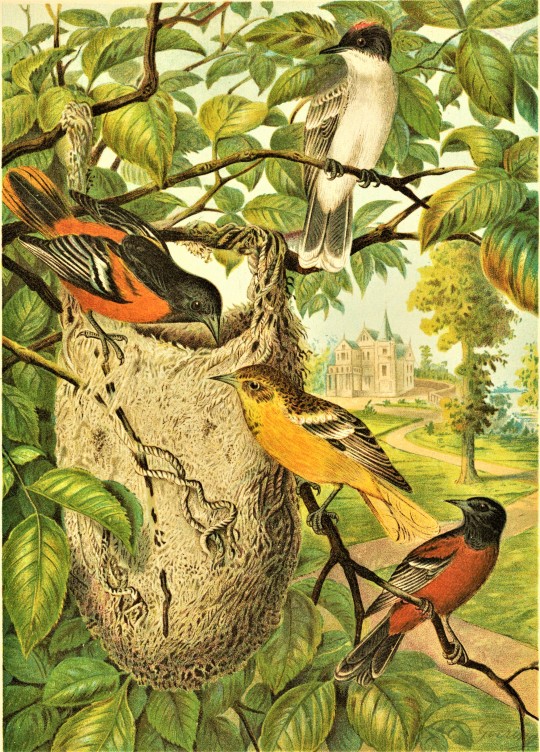
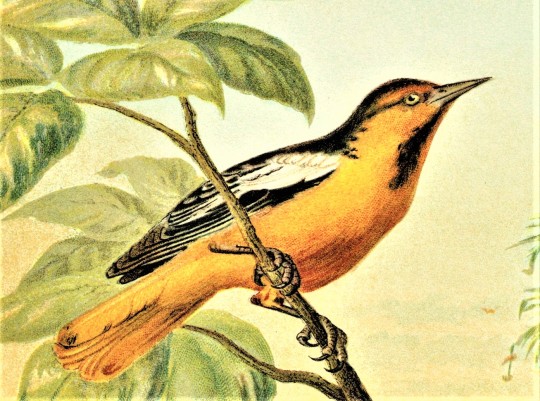


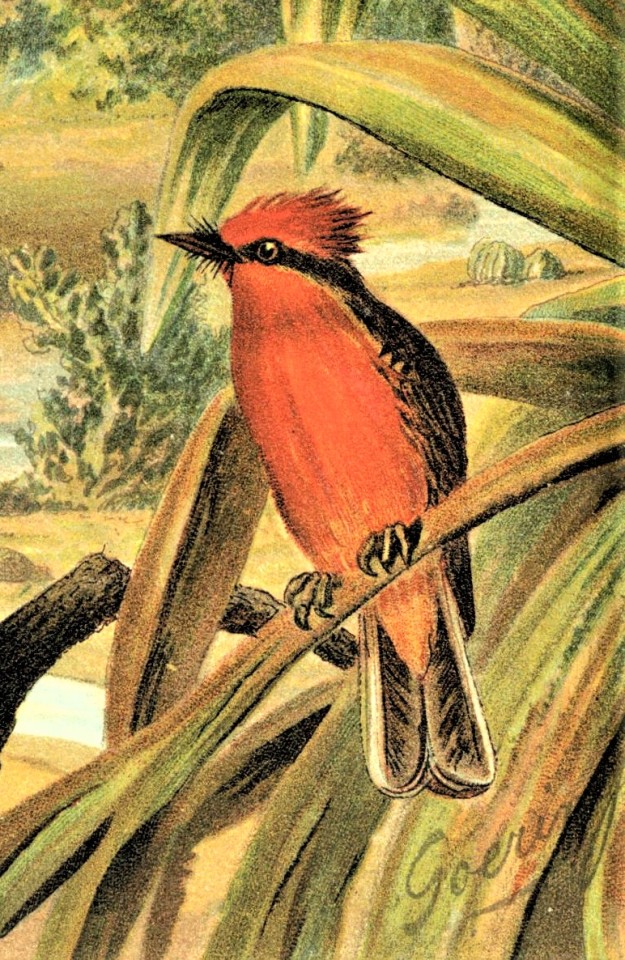
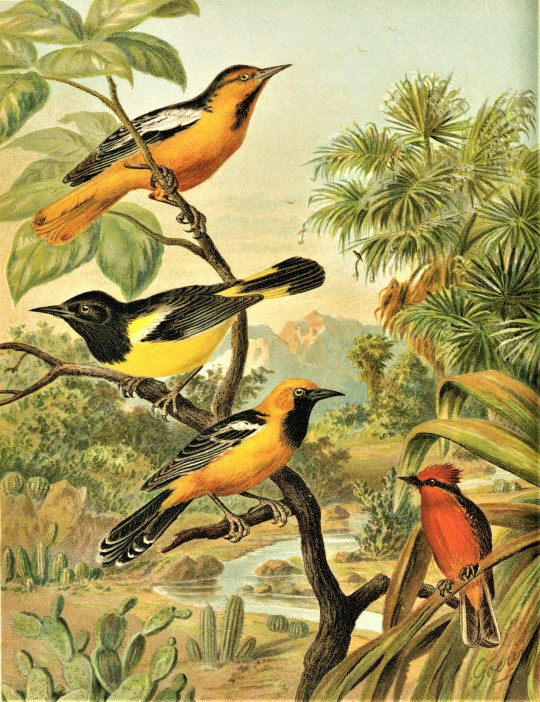
Feathursday Orioles!
Here are a few chromolithographic Feathursday Orioles, along with a Kingbird and a Flycatcher, from our 2-volume set of Our Native Birds of Song and Beauty, by the late-19th-century director of the Milwaukee Public Museum Henry Nehrling, and published in Milwaukee by George Brumder from 1893-1896. The lithographs are based on original water color paintings by the German naturalist painter Anton Goering. The individual birds from top to bottom are:
Baltimore Oriole (Icterus galbula), male.
Baltimore Oriole (Icterus galbula), female.
Orchard Oriole (Icterus spurius).
Eastern Kingbird (Tyrannus tyrannus).
Bullock's Oriole (Icterus bullockii).
Scott's Oriole (Icterus parisorum).
Hooded Oriole (Icterus cucullatus).
Scarlet Flycatcher (Pyrocephalus rubinus).
View more posts from Nehrling’s Our Native Birds.
View more Feathursday posts.
#Feathursday#orioles#kingbirds#flycatchers#henry nehrling#Anton Goering#George Brumder#Our Native Birds of Song and Beauty#Baltimore Oriole#Orchard Oriole#Bullock's Oriole#Scott's Oriole#hooded oriole#Eastern Kingbird#Scarlet Flycatcher#bird paintings#chromolithographs#Yay chromoliths!#wading birds#birbs!
66 notes
·
View notes
Photo





A Hightailed Feathursday
We love the little tail-flags of high-spirited wrens. Here’s a little guy we never see in our region, the Canyon Wren (Catherpes mexicanus), which is a western and southwestern bird, down through Mexico. Canyon Wrens prefer steep rocky environments, arid landscapes, and deep canyons; not much of that around here in southeastern Wisconsin.
This chromolithograph is from a painting by American ornithologist Robert Ridgway, the first curator of birds at the Smithsonian Institution, from our 2-volume set of Our Native Birds of Song and Beauty, by the late-19th-century director of the Milwaukee Public Museum Henry Nehrling, and published in Milwaukee by George Brumder from 1893-1896.
View more posts from Nehrling’s Our Native Birds.
View more Feathursday posts.
#Feathursday#Canyon Wren#Robert Ridgway#henry nehrling#Our Native Birds of Song and Beauty#George Brumder#wrens#wildlife art#chromolithographs#Yay chromoliths!#birds#birbs!
45 notes
·
View notes
Photo





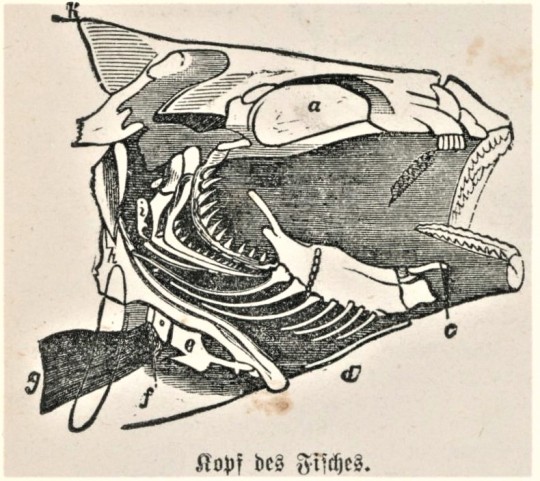

Wissenschaft Samstag
This Saturday we present illustrations from Der Hausthier-Arzt (The Domestic Animal Doctor), a German-language veterinary guide geared towards farmers and ranchers published in 1881 by Brumder Verlag of Milwaukee.
Milwaukee was an important center of German-American printing in the late nineteenth and early twentieth century and George Brumder was an integral figure in both the city’s German-American community and its publishing scene. Born to German parents in the Alsatian region of France, George Brumder emigrated to Wisconsin in 1857 at the age of 18, escorting his sister Christiana, who was betrothed to a Lutheran minister there. Soon after their marriage, he settled in Milwaukee and worked on a crew laying the cities first street car tracks. In 1864, Brumder married his wife Henriette and opened a small bookstore on Water Street. The bookstore prospered and soon the Brumder’s began printing, bookbinding, and publishing as well. By Brumder’s death in 1910, he had become the leading German-language publisher in the nation.
The Brumder Collection, with the support of Brumder’s descendants, documents the prominent place of Milwaukee publishers in the history of German-language publishing in the United States. The collection contains over 500 items from both Brumder’s publishing enterprises and other Milwaukee-based German-language publishers.
See more posts from the Brumder Collection here.
View more Science Saturday posts here.
-Olivia, Special Collections graduate intern
#science saturday#Der Hausthier-Arzt#The Domestic Animal Doctor#veterinary medicine#George Brumder#Brumder Verlag#The Brumder Collection#Brumder#Henriette Brumder#milwaukee history#milwaukee publishers#German-American#German-language publishing#olivia#scientific illustration
45 notes
·
View notes
Photo
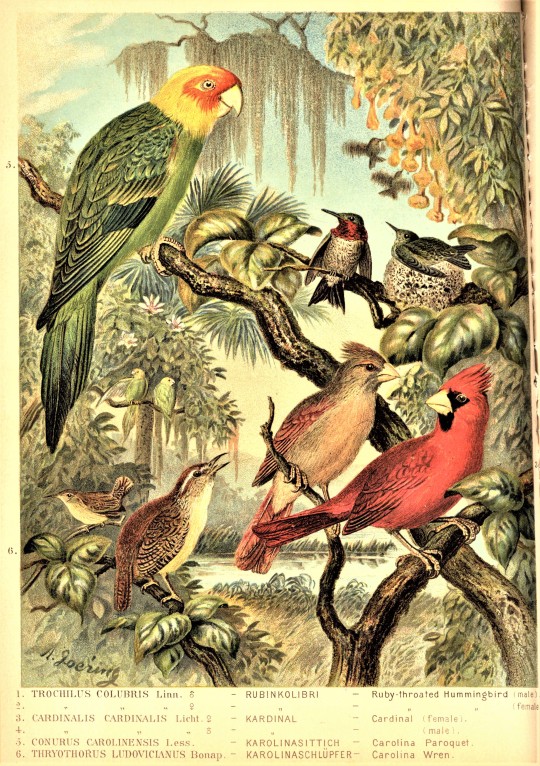
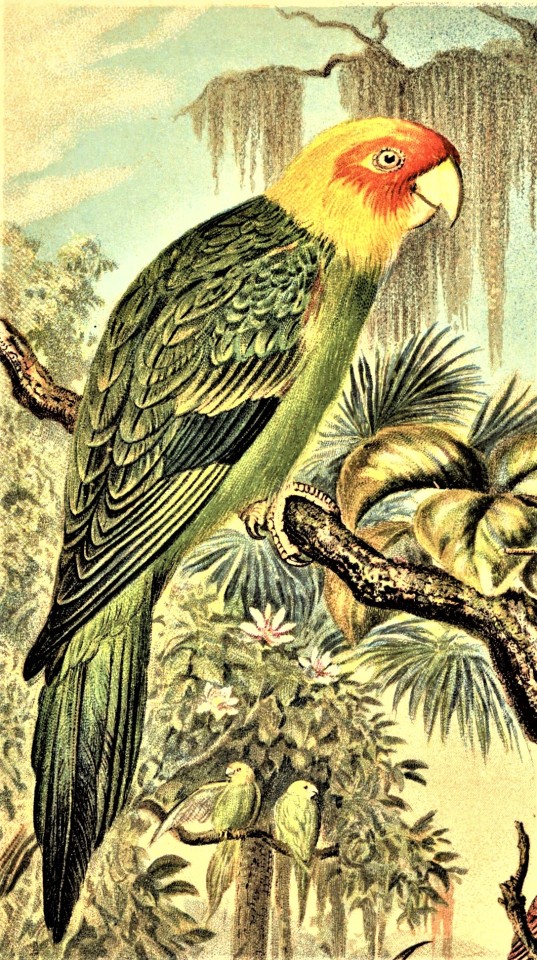



A Carolina Marsh Feathursday
Now, here’s a group of birds you would never see together in Wisconsin. In fact you would would never see this entire grouping of birds anywhere as the Carolina Parakeet (Conuropsis carolinensis) shown here was officially declared extinct in 1939, and the last confirmed sighting was in 1910.
Judging from the Spanish Moss depicted on the tress, we’d say this scene is somewhere in the American southeast. While the Carolina Parakeet is a gone bird, the Ruby-throated Hummingbird (Archilochus colubris) and the Northern Cardinal (Cardinalis cardinalis) are ubiquitous from the eastern U.S. through the Midwest, including in our neck of the woods. The Carolina Wren (Thryothorus ludovicianus) is generally an eastern bird, but while their range has extended as far west as Nebraska, they have not managed to spread far north enough to grace our corner of Wisconsin.
This chromolithograph based on a painting by the German naturalist painter Anton Goering (1836-1905) is from our 2-volume set of Our Native Birds of Song and Beauty, by the late-19th-century director of the Milwaukee Public Museum Henry Nehrling (1853-1929), and published in Milwaukee by George Brumder from 1893-1896.
View more posts from Nehrling’s Our Native Birds.
View more Feathursday posts.
#Feathursday#Carolina Parakeets#Ruby-throated Humminbirds#Northern Cardinals#Carolina Wrens#Spanish Moss#Henry Nehrling#Anton Goering#Our Native Birds of Song and Beauty#George Brumder#chromolithographs#Yay chromoliths!#birds#birbs!
134 notes
·
View notes
Photo


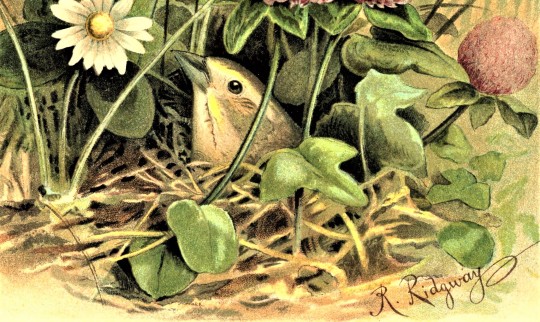
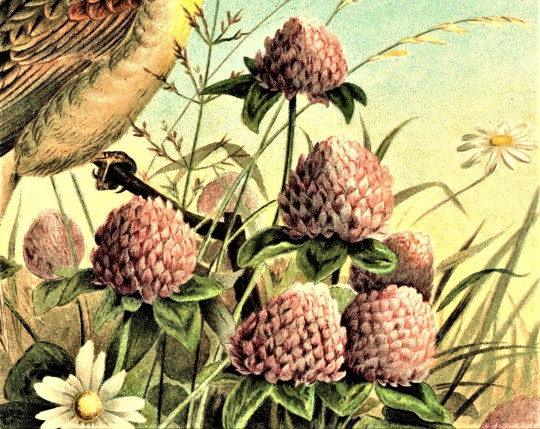
A Dickcissel Feathursday
The Dickcissel (Spiza americana) is mainly a bird of the American Midwest. I have seen and heard them in my rambles around the Midwest, especially in Iowa, South Dakota, and Kansas, but I have never seen them here in Wisconsin. Although our state forms a part of their range, they are scarce here and have been designated by our Department of Natural Resources as a species of “Special Concern.” Ostensibly they look like sparrows or finches, but they are really members of the Cardinalidae family, and are the only extant species in the genus Spiza. Their beak shape kind of gives them away as Cardinal-like birds.
They like open fields and prairies, especially with a significant component of forbs, such as the red clover depicted in this chromolithograph. They are mostly ground-nesting birds, also depicted here, but their nests can also be found low in bushes and trees. The species is polygynous, unusual among passerines, with the male often supporting more than one mate during the breeding season. During breeding season, the males stand sentry on tall grass, shrubs, low in trees, and on fence posts singing their hearts out. Their positioning and coloration, with bright yellow chests and black bib, at initial glance from a distance has often made me think that I’ve spotted a Meadowlark, but again the beak shape is a dead give away.
This chromolithographic plate from a painting by the noted American ornithologist Robert Ridgway, the first curator of birds at the Smithsonian Institution, is from our 2-volume set of Our Native Birds of Song and Beauty, by the late-19th-century director of the Milwaukee Public Museum Henry Nehrling, and published in Milwaukee by George Brumder from 1893-1896.
View more posts from Nehrling’s Our Native Birds.
View more Feathursday posts.
-- MAX, Head, Special Collections
#Feathursday#Dickcissels#Cardinalidae#Spiza#red clover#Robert Ridgway#Henry Nehrling#George Brumder#Our Native Birds of Song and Beauty#chromolithographs#Yay chromoliths!#Midwestern birds#birds#birbs!
92 notes
·
View notes
Photo
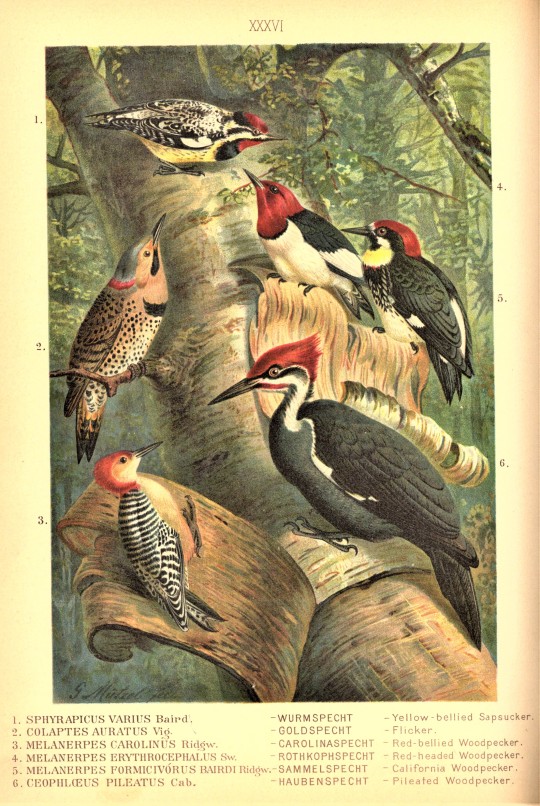
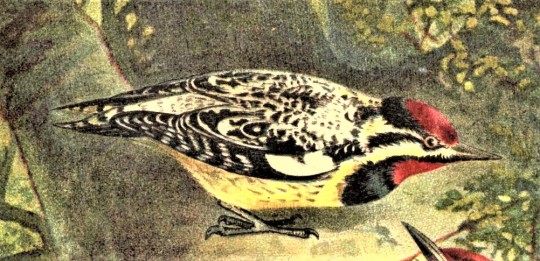





A Woodpecking Feathursday
Woodpeckers in our neighborhood have been especially busy this summer, tap-tap-tapping away (or in the cased of the Pileated, drum-drum-drumming!) on their daily meal rounds. The Downer Woods on the north side of our campus are just riddled with Flickers, Downy, Hairy, and Red-bellied Woodpeckers, and not too long ago I heard the distinctive, robust Drum-dida-dida-dida-Drum! of a Pileated Woodpecker about a mile north of Downer. Just so much pecking going on! But it is such a delight to watch these drill-beaked carpenters creeping up tree trunks and branches, listen to their rattling, cackling, and laughing calls, and watch them dart from tree to tree in their distinctive undulating pattern.
The image shown here is a chromolithograph of a painting by the noted German nature painter Gustav Mützel from our 2-volume set of Our Native Birds of Song and Beauty, by the late-19th-century director of the Milwaukee Public Museum Henry Nehrling, and published in Milwaukee by George Brumder from 1893-1896. The Downy and Hairy are the most commonly seen woodpeckers in our neighborhood, but the birds depicted here, except for the Acorn Woodpecker (identified in this plate as the California Woodpecker), also have a presence here in southeastern Wisconsin, although the Yellow-bellied Sapsucker tends to migrate through our area, preferring to summer in Wisconsin’s Northwoods. Shown here in the order numbered on the plate are:
1.) Yellow-bellied Sapsucker (Sphyrapicus varius)
2.) Northern Flicker (Colaptes auratus)
3.) Red-bellied Woodpecker (Melanerpes carolinus)
4.) Red-headed Woodpecker (Melanerpes erythrocephalus)
5.) Acorn Woodpecker (Melanerpes formicivorus)
6.) Pileated Woodpecker (Dryocopus pileatus)
View other posts with woodpeckers.
View more posts from Nehrling’s Our Native Birds.
View more Feathursday posts.
#Feathursday#woodpeckers#Yellow-bellied Sapsuckers#Northern Flickers#Red-bellied Woodpeckers#Red-headed Woodpeckers#Acorn Woodpeckers#Pileated Woodpeckers#Henry Nehrling#Our Native Birds of Song and Beauty#Gustav Mützel#George Brumder#chromolithographs#Yay chromoliths!#birds#birbs!
81 notes
·
View notes
Photo




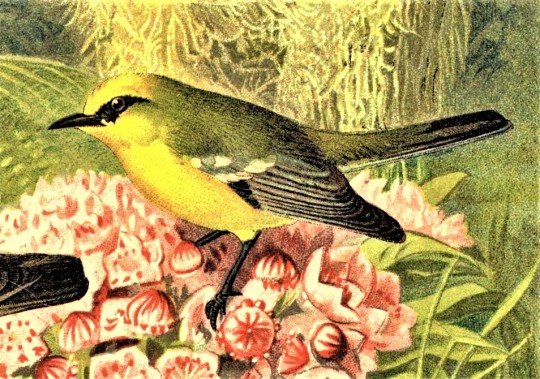
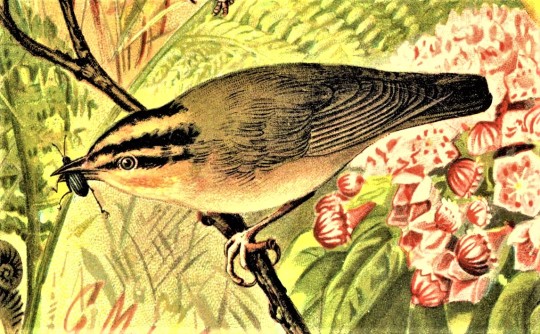
A Warbling Feathursday
While we enjoy watching and identifying birds, the many species of warblers just confuse everyone in our department. They’re tiny and fast, there are way too many species, and learning their individual calls is just too much. Very unfortunately, the only time we get a really good view of a warbler is after they have hit one of the windows here on campus. But even with a field guide, it’s still a chore to land the right identification. Still, they are beautiful little creatures with exquisite warbling songs.
Shown here are chromolithographs of five North American warblers, from a painting by the noted German wildlife artist Gustav Mützel, found in our 2-volume set of Our Native Birds of Song and Beauty, by the late-19th-century director of the Milwaukee Public Museum Henry Nehrling, and published in Milwaukee by George Brumder from 1893-1896. They are from top to bottom:
1.) Northern Parula (Setophaga americana)
2.) Black-and-white Warbler (Mniotilta varia)
3.) Golden-winged Warbler (Vermivora chrysoptera)
4.) Blue-winged Warbler (Vermivora cyanoptera)
5.) Worm-eating Warbler (Helmitheros vermivorum)
Of these, only the Golden-winged and Blue-winged inhabit our area, and we have indeed found them on the pavement next to campus buildings, sad to say. Hard to think about, but at least this lovely chromolith lifts our spirits.
View more posts from Nehrling’s Our Native Birds.
View more Feathursday posts.
#Feathursday#warblers#Northern Parula#Black-and-white Warbler#Golden-winged Warbler#Blue-winged Warbler#Worm-eating Warbler#Gustav Mützel#Henry Nehrling#George Brumder#Our Native Birds of Song and Beauty#chromolithographs#Yay chromoliths!#birds#birbs!
49 notes
·
View notes
Photo

Feathursday Warbler
It’s still chilly and dank here in the Upper Midwest, and we are most definitely trying to will spring into being. So to bolster our spring frame of mind, we present this chromolithograph of a cheery little Prothonotary Warbler (Protonotaria citrea) from Henry Nehrling’s 1893 publication Our Native Birds of Song and Beauty, published in Milwaukee by George Brumder. In Wisconsin we occasionally see these tiny birds arriving in spring in the southern third of our state, especially along the Wisconsin and Mississippi rivers.
View more posts from Our Native Birds.
Keep an eye out for the Prothonotary and wish for spring!
#Feathursday#warblers#Prothonotary Warbler#spring#Henry Nehrling#Our Native Birds of Song and Beauty#George Brumder#chromolithographs#Yay chromoliths!#birds#birbs!
34 notes
·
View notes
Photo




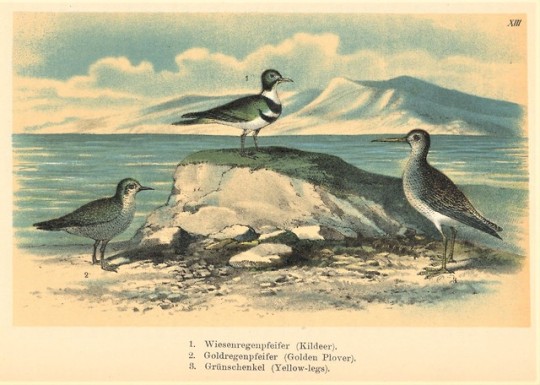

A Wisconsin Waterfowl Feathursday
Illustrirtes Thierleben Für Schule und Haus by Dr. Hermann Dümling, published in Milwaukee by George Brumder in 1879, is a two-volume natural history of animals, “with special consideration of the American animals.” For many years we only held the first volume on Säugetiere, or mammals (in German, literally “sucking animals”). However, through a recent gift from Martin and Hedwig Kaufman we now have a pristine copy of volume two, Vögel, or birds!!
Volume two has scores of wood-engraved images, plus 18 full-page chromolithographic plates. While the wood engravings seem quite accurate, the chromos, which are unattributed, are much more naive than those found in Brumder’s more well-known 1890s printings of Henry Nehrling’s Our Native Birds of Song and Beauty.
To celebrate this new acquisition from the Kaufmans, we present images of some of the birds that can be found along Wisconsin’s many lakes, rivers, marshes, and shores, including Bobolink, called a Rice-bird here (Dolichonyx oryzivorus); Redhead (Aythya americana); Wood Duck (Aix sponsa); Goldeneye (Bucephala clangula); Green Heron (Butorides virescens); American Woodcock (Scolopax minor); Common Loon (Gavia immer); Great Blue Heron (Ardea herodias); Killdeer (Charadrius vociferus); Golden Plover (Pluvialis dominica); and Yellowlegs, which from this image we can’t tell if it’s a Greater (Tringa melanoleuca) or Lesser Yellowlegs (Tringa flavipes).
Hermann Dümling was a professor at Concordia College in Ft. Wayne, Indiana, at the time of this publication, but had taught high school in Milwaukee in the 1860s. By the 1890s George Brumder would become the largest publisher of German-language books in America, and our collection of Milwaukee German-language imprints is named for him.
View more posts relating to our George Brumder publications.
View more Feathursday posts.
#Feathursday#birds#George Brumder#waterfowl#Hermann Dümling#Illustrirtes Thierleben#wood engravings#chromolithographs#Yay chromoliths!#birbs!
66 notes
·
View notes
Photo

A Name-That-Bird Feathursday
We’ve been missing @statelibraryor‘s Name That Bird #Feathursday challenge these past few weeks, so we thought we’d do one of our own to ease our withdrawal symptoms. This chromolithograph comes from Henry Nehrling’s 2-volume set of Our Native Birds of Song and Beauty, published in Milwaukee by George Brumder from 1893-1896.
We think it might be possible to identify this feathered couple from the coloration, stance, and nest shape. What do you think? Can you . . .
NAME THAT BIRD?
Answer at 5 pm Central Standard Time.
View more posts from Nehrling’s Our Native Birds.
View other Name That Bird puzzlers.
View more #Feathursday posts.
#Feathursday#name that bird#puzzler#Henry Nehrling#George Brumder#Our Native Birds of Song and Beauty#chromolithographs#Yay chromoliths!#birds#birbs!
21 notes
·
View notes